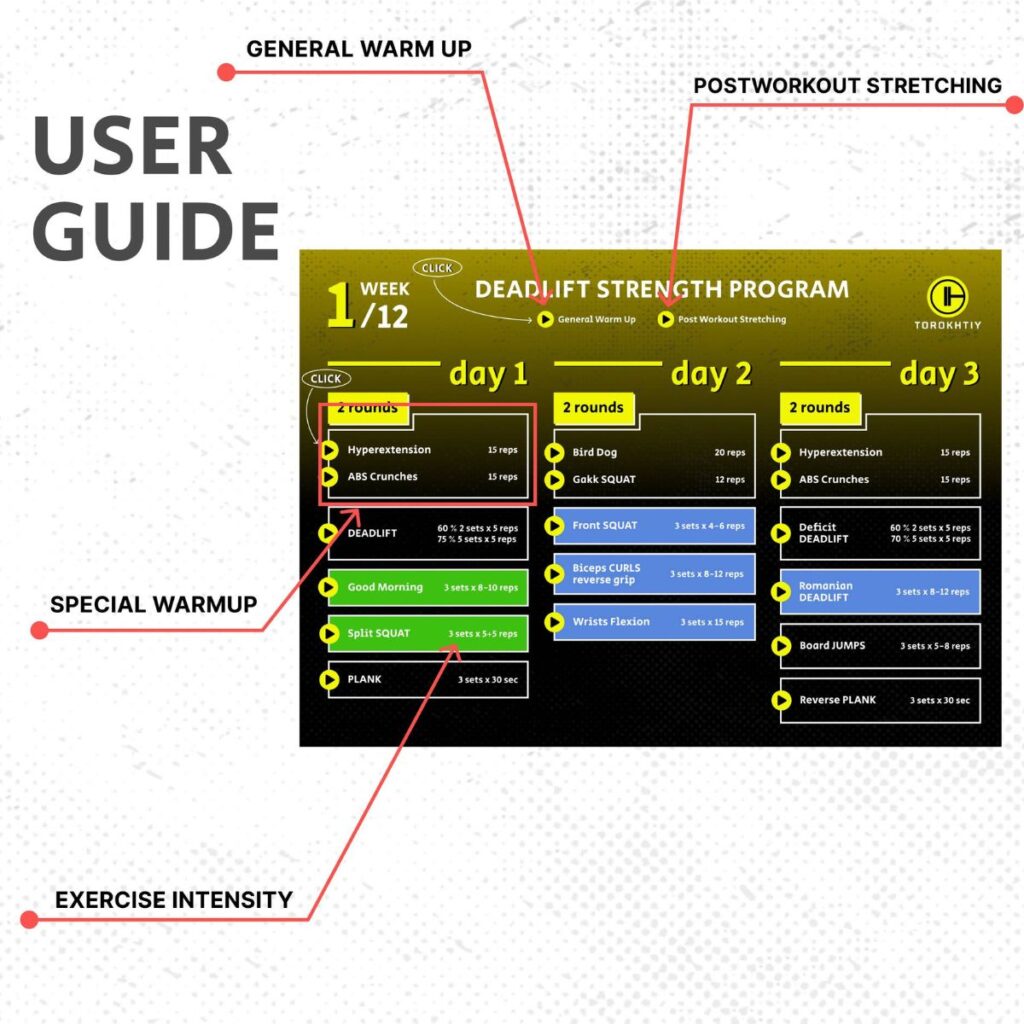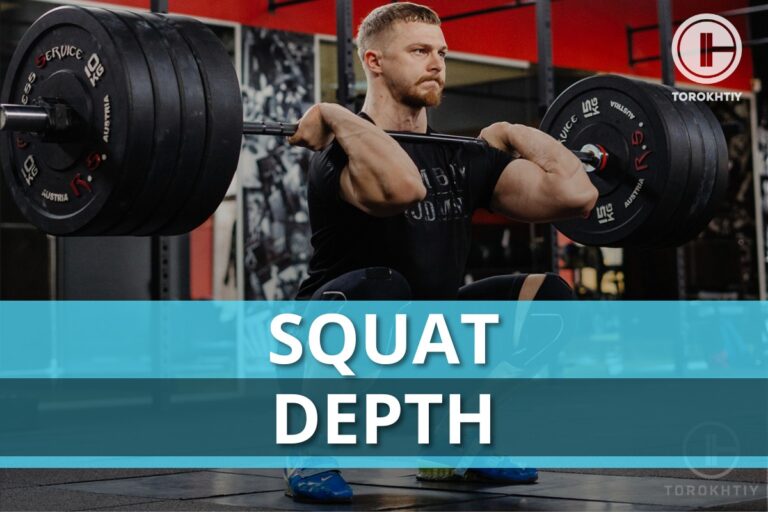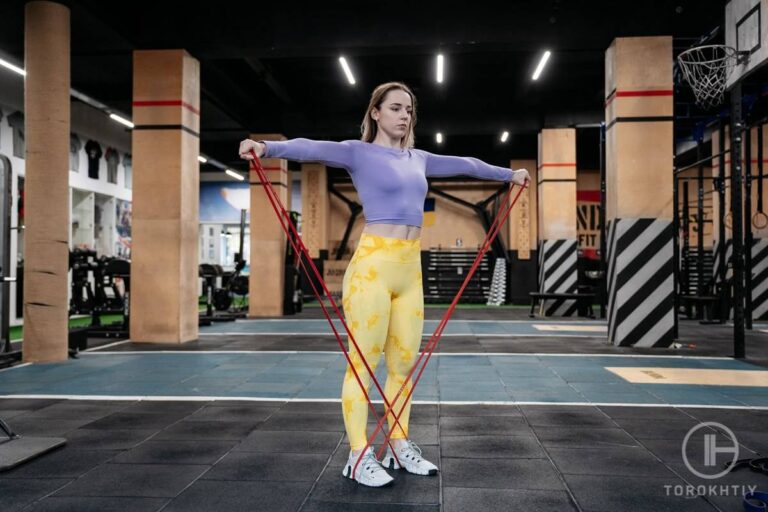How Often Should You Deadlift For Optimal Results?
Everyone wants to see the best possible result in the shortest amount of time. But how often should you deadlift if you want to see optimal progress with that particular exercise?
If you continue reading, you will find out as the topic of this article is precisely deadlift frequency – how often should you deadlift heavy, should you have a deadlift day workout, and what’s the best way to progress depending on your goals. Once you’re finished with this short, you will know how often to deadlift in order to not only keep on getting better but also remain injury free and healthy.
How often should you deadlift? Anywhere between one to three times a week is the optimal amount of deadlift training you should do. With that said, depending on your goals and your availability, that number might vary.

What Is a Deadlift?
The deadlift is a compound exercise that involves several large muscle groups, including the back, legs, core, and glutes. It’s considered one of the most valuable exercises you can do to increase strength and muscle mass while also being one of the most functional movements you can do in the gym.
Essentially, the deadlift imitates one of the most basic movements we perform every day – bending down to pick something off the floor. Just think about it, how many times per day do you need to bend down and lift something – whether that’s the garbage can, your laundry, a small child, your dog, or another object in the house? Probably at least 20 times every single day of the week. Additionally, because it involves so many of the big muscle groups, the deadlift is an exercise that will raise your heart rate, burn a ton of calories and help you improve your balance and coordination.
Because of the many benefits of training the deadlift and the fact that it’s a required exercise for weightlifters, people often train it multiple times per week. That’s especially true for individuals seeking to achieve better athletic results. However, because of its taxing nature, doing a heavy deadlift workout every day is definitely not recommended. But what is?
How Often Should You Deadlift?
Before we dive into the discussion about the frequency of your deadlift sessions, we first have to talk about the training frequencies per muscle group in general. On the internet, you can easily find gurus that say – you should deadlift 3 times a week, squat twice and run five times to achieve the perfect physique. However, that’s just a standard template that doesn’t take into consideration a large number of factors, including:
- How often can you train per week
- Your training experience
- What other types of training do you
- Your preferences
- Your training goals
- How much volume do you
And so, to differentiate ourselves from many fitness blogs, let’s dive in and discuss those factors first.

How Often Can You Train Per Week?
If you’re not a professional athlete, it’s unlikely that you’re able to train twice a day or even every day. That means you have a certain amount of hours every week to dedicate to getting into better shape – considering that is extremely important when you’re creating your workout plan and thinking: “How many times a week should I deadlift.”
1. Your Training Experience
There’s a big difference between beginner lifters, advanced athletes, and professionals. Knowing your level is key for determining how many days per week you should deadlift and how many sets you should do, and with what kind of volume. A beginner is likely to be able to deadlift once a week, while an advanced lifter may be able to incorporate deadlifts every other session.
2. What Other Types of Training You Do?
If you’re preparing for a marathon or playing soccer every other night, you won’t be able to deadlift more than once or twice per week. Not only because you likely won’t find the time but also because your legs will be too overloaded by the demand.
3. Your Preferences
If you’re not a powerlifter, fitnessers, or Olympic weightlifter, you might not find the deadlift to be an exercise you should focus on. It might be an excellent addition to your exercise plan, but you don’t need to train daily.

4. Your Training Goals
The frequency of your deadlift sessions also depends on your goals – if you want to compete in a tennis tournament, you won’t have to deadlift twice or three times per week. On the other hand, if you’re going to gain strength, then you should strongly consider upping the frequency of your deadlift sessions.
5. How Much Volume You Do?
Volume is the main contributor to fatigue in any training plan. That’s why knowing your volume is key to getting adequate recovery. In weightlifting, volume refers to total reps x load lifted. Typically, the more you train, the more strength you gain due to being able to load more sets. But if the volume is equated, the research points to the fact that gains have no favor to any particular frequencies, and anywhere between once to three times a week works.
Essentially this means that if you can get the same amount of volume in fewer training sessions – let’s say two instead of three then that won’t make a difference in your strength gains.
Reasons to Increase Deadlift Training Frequency
You would want to increase your deadlift training volume for a few reasons. Let’s discuss some of them.
1. Improve Technique
If you’re a beginner, you might find yourself struggling with the technique and desperately asking the trainer, “How many sets of deadlifts should I do” hoping he says the lowest number possible. If you find yourself in that position, it’s a great sign that you should start doing the deadlift more frequently.
One of the things you need to pay attention to here is not to overdo the exercise, thus reaching fatigue and compromising the technique you worked hard to improve on. When it comes to training for improving technique, you don’t need to load the barbell with a ton of weight – instead, you should put on weight that’s easy for you to lift and that allows you to focus on how you’re performing the movement.
Because these sessions are less taxing on the body, they can be done once or twice by beginners and three or more times by more advanced lifters. It’s all about being careful not to get fatigued.

2. Spread Volume Over More Days
As we already mentioned, fatigue depends on the volume rather than on how many days per week you deadlift. For intermediate or even advanced lifters, getting all the needed training volume in one session is likely impossible, which is why it’s better to spread it out over the week.
This means that you will have to increase the deadlift frequency over the course of the week, which will not only benefit the strength gains but also allow you to have less fatigue throughout the course of several days compared to what you would get if you just did one massive deadlift workout, once a week.
3. You Can Only Do Short Training Sessions
If you have a full-time job and a family, you likely don’t have hours to spend deadlifting. Having a busy schedule doesn’t mean it’s impossible for you to improve; it just means you have to balance your training plan. And in this scenario, that translates to more, but shorter, deadlift sessions.
Once you know the volume of work you should do, you can find a way to distribute it throughout the course of a week in a way that fits all your other engagements and makes sense for you.

Reasons NOT to Increase Deadlift Training Frequency
Now that we covered why increasing your deadlift training frequency might be necessary, let’s talk about the reasons why you should slow down a bit.
1. If You Have/Or Had an Injury
The deadlift is a compound, complex exercise that puts a ton of pressure on your body. And one of the strongest predictors of a future injury is a previous one. And so, if you’ve recently had an issue with a muscle or tissue issue, you want to pay special attention to having good technique and managing your pain and discomfort. Your training volume might have to decrease for a certain period until you’re fully healed and ready to return to normal.
In such situations, it’s vital, to be honest with yourself and to properly assess what your body needs at the moment – working out injured won’t make things better; in fact, it’s more likely to make them worse.
2. You’re Burnt Out
As a beginner, you will start seeing results very quickly, and every 2-3 months, you will be able to experience notable changes in your performance. During that time, you might also find that the more you train, the more you progress. This might reinforce the idea that you must keep increasing your training frequency to improve. However, this idea is false, and over time, it might lead you to the point of overtraining, where you’re both physically and mentally exhausted and in need of rest.
3. Deloading the Lower Body
If you’ve just done a competition or are towards the end of a training cycle, you might feel more stress than normal in your lower body. This is a clear sign that you need to decrease the intensity and volume of your training sessions, as your body needs rest. When it comes to deadlifting, that might mean skipping a week or two of training them or working with easy weights.

4. Deadlift Day Workout
Due to consuming a ton of fitness content, beginners often ask, “What day should I do deadlifts?”. Unfortunately, the answer is that there’s not one particular day – it all depends on your training goals.
For example, if you plan on doing deadlifts only once per week, your plan might look like this.
Case 1: Once Per Week
- Deadlift 3 to 5 sets of 3 to 6 reps at 70 to 80% of your 1RM
Additionally, depending on your goals, you can add one more variation to the training session:
For strength training:
- 2 to 3 sets of 4 to 6 reps at 65-75% of 1RM
For hypertrophy:
- 2 to 3 sets of 8 to 10 reps at 55-70% of 1RM
For technique:
- 2 to 3 sets of 4 to 6 reps at 55-70% of 1RM
Case 2: Twice Per Week
If you train twice weekly, your plan might look like this.
Day 1:
- 3 to 5 sets of 3 to 6 reps at 70-85% of 1RM
Day 2: (depending on your focus)
- 3 to 4 sets of 8 to 10 reps at 55-70% of 1RM (for hypertrophy)
- 4 to 5 sets of 4 to 6 reps at 55-70% of 1RM (for technique)
- 3 to 4 sets of 4 to 6 reps at 65-75% of 1RM (for strength)
Case 3: Three Per Week
Finally, if you plan on deadlifting three times per week, your plan might look like this.
Day 1 (Maximum Effort):
- 3 to 5 sets of 3 to 6 reps at 75-85% of 1RM
Day 2 (Easy Effort):
- 3 to 5 sets of 2 to 4 reps at 70-85% of 1RM
Day 3 (Moderate Effort):
- 3 to 4 sets of 8 to 10 reps at 55-70% of 1RM (for hypertrophy)
- 3 to 4 sets of 4 to 6 reps at 55-70% of 1RM (for technique)
- 3 to 4 sets of 4 to 6 reps at 65-75% of 1RM (for strength)

🔻12-Week Deadlift Strength Program by Oleksiy Torokhtiy
Unlock your true potential with our Deadlift Strength Program!
Designed for athletes by 2-time Olympian Oleksiy Torokhtiy, this 12-week program focuses on enhancing your deadlift strength, strengthening your back and legs.
Program details:
- 12 weeks;
- 3 days / week;
- 45-120 minutes per session;
- 50+ specific exercises;
- Focus on New Result in Deadlift;
- One-time payment, no recuring payments;
- Full access to all training content.
Start now and boost your deadlift results!
FAQ
Is It Okay If I Deadlift Every Day?
You can deadlift every day if you’ve spread out your volume correctly – otherwise, you’re risking overtraining the body, which can lead to injuries.
How Long Should You Wait Between Deadlift Days?
Depending on how heavy your session was, you should rest anywhere between 2 to 4 days, although this varies depending on your training volume and goals.
Conclusion
We’ve reached the end of the article, and by now, you all hopefully know all about deadlift training frequency. Still, if you have any questions or you want to share an opinion, write to us in the comments below.
Also read:
- Deadlift Sets and Reps
- Rounded Back Deadlift
- Deadlift Starting Position
- Accessory Exercises for Deadlift
References:
- Effects of Resistance Training Frequency on Measures of Muscle Hypertrophy // NCBI: https://pubmed.ncbi.nlm.nih.gov/27102172/
- Weekly Training Frequency Effects on Strength Gain: A Meta-Analysis // NCBI: https://www.ncbi.nlm.nih.gov/pmc/articles/PMC6081873/
- 5 Benefits of Compound Exercises // ACE: https://www.acefitness.org/resources/pros/expert-articles/5811/5-benefits-of-compound-exercises/
Why Trust Us?
With over 20 years in Olympic Weightlifting, our team does its best to provide the audience with ultimate support and meet the needs and requirements of advanced athletes and professional lifters, as well as people who strive to open new opportunities and develop their physical capabilities with us.
By trusting the recommendations of our certified experts in coaching, nutrition, dietology, and sports training programming, as well as scientific consultants, and physiotherapists, we provide you with thorough, well-considered, and scientifically proven content. All the information given in the articles concerning workout programming, separate exercises, and athletic performance, in general, is based on verified data. We ensure that you can rely on our professionals’ pieces of advice and recommendations that can be treated as personalized ones which will benefit you and fully meet your needs.
The product testing process is described in more detail here
Author: Sergii Putsov
Head of Sport Science, PhD
Best Results: Snatch – 165 kg,
C&J – 200 kg
Sergii Putsov, Ph.D., is a former professional weightlifter and National team member, achieving multiple medals in the 94 kg weight category at national competitions. With a Master’s degree in “Olympic & Professional Sport Training” and a Sport Science Ph.D. from the International Olympic Academy, Greece, Sergii now leads as the Head of Sport Science. He specializes in designing training programs, writing insightful blog articles, providing live commentary at international weightlifting events, and conducting educational seminars worldwide alongside Olympic weightlifting expert Oleksiy Torokhtiy.








